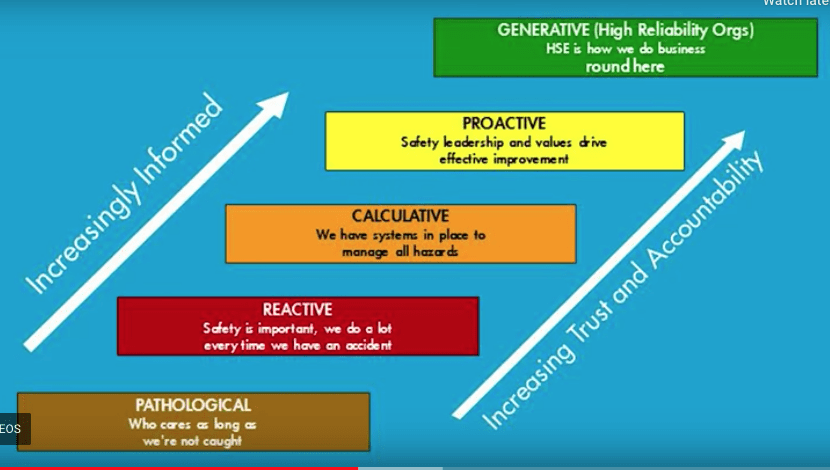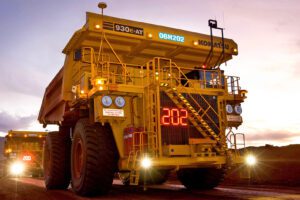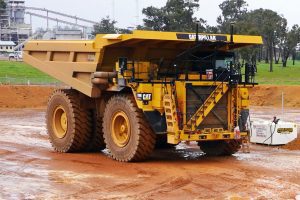The term ‘mining safety leadership’ is often used throughout the mining industry to herald an individual or companies achievements in mine safety. But it can mean many things to many people. It’s a non-descript term often that requires clarification.
Some see mining safety leadership as a reduction in incidents or statistics, others see it in terms of initiatives or adoption of best practices but, fundamentally safety leadership can be defined by the core principles of modern leadership. Very clearly, good leadership is not one dimensional. It incorporates a range of emotional intelligence and behaviours that help others achieve goals.
The Australian Human Resources Institute says that “leadership plays a pivotal role in all organisations. It involves creating direction for individuals and teams to align with business objectives and goals. Leaders need to communicate, motivate and empower their employees whilst being strategically focused on performance outcomes.”
“Leadership is a key challenge in organisations today with the ever-changing external environment and the varying pressures that organisations encounter.”
Extensive research tells us that leadership is defined by a range of core personal behaviours. It’s not just about style…it’s about substance. Great mining safety leaders are:
- Transactional: They set minimum standards for safety at their mines and they recognise good technical safety performance and correct problems before they cause harm.
- Transformational: They engage people and inspire others to take on safety goals as their own, they role model, provide a positive influence and challenge people to come up with mining safety solutions.
- Authentic: They are open to feedback and having a willingness to admit mistakes.
- Empowering: They share safety decision making, often advocating or standing up for other’s rights.

The reason why ‘safety leadership’ can be unhelpful as a concept is because it suggests that a leader adopts a special style just for safety. This treats safety as an ‘add-on’ to ordinary leadership. In other words, that safety is something extra or different that a leader is doing.
More helpful is to talk about good general leadership, combined with a priority and commitment to safety. This approach treats safety as an integrated and central part of good leadership.
READ RELATED
- Weak and invisible safety leadership
- Beyond the low hanging fruit in workplace safety
- 5000 workers stand down for global safety day
Behaviours of mine safety leaders
Types of behaviours that display good safety leadership in mining include:
- They have a clear vision on safety at their mine site and they have the integrity to adhere to that vision;
- Know what your team member’s need in respect of safety;
- Listening for opportunities for improvement from the mineworkers;
- Educating mineworkers on the benefits of working safely with plant and equipment;
- Verifying that miners know and adhere to standards of work;
- Explaining the reasons why people need to adhere to mine safety requirements;
- Encouraging mine personnel to share their views on safety could be improved;
- Have a genuine from the heart talk about safety during team meetings;
- Seeking input from plant and equipment operators for their input into safety procedures;
- Gathering plant and equipment operators together to talk about safety;
- Getting out of the office and around the mine site observing operators’ safety;
- Interacting with plant and machine operators and listen to their concerns about safety;
- Participating in workplace safety activities and initiatives (e.g. committee meetings);
- Taking the time to develop a positive working relationship with plant and machinery operators;
- Making it known that mineworkers can stop or refuse the job if it is unsafe;
- Encouraging all mineworkers to suggest what to do about a safety issue.
Learn more around Safety Leadership through this video from Professor Patrick Hudson below.
Find out What type of Safety Leader are you?
Read more Mining Safety News














Dear Ed
I think that your list of ‘model’ leadership behaviours describe a fairly narrow perspective and are not too distant from the existing traditional views on leadership. I think you need to look a bit farther afield. Starting with behaviours is putting the cart before the horse, you need to start with core principles, this is what is really missing. Try these from Todd Conklin, the 5 Principles of Human Performance:
1. Error is normal
2. Blame fixes nothing
3. Learning is vital
4. Context drives behaviour
5. How leaders respond to failure matters
Add to that, the ‘Four Tenets of Safety Differently’:
1. Safety is not defined by the absence of an event with a negative consequence but is defined by the presence of effective risk controls (moving safety from an objective to be achieved to a capacity to manage risk while work is being performed).
2. Workers are not a problem to be fixed, rather workers are the problem solvers. Tapping into the profound knowledge and expertise that workers have in understanding and managing the complexity and variability associated with their work, being the glue that makes the work design, the work environment, the tools and equipment and the systems and processes come together that achieve organisational objectives on vastly more occasions than not (blue line versus black line).
3. Understanding and providing the resources that the workers need to perform work reliably and safely. Decluttering, simplifying, removing constraints that make work difficult. Making it easier to do it right than wrong
4. Safety doesn’t prevent bad things from happening, safety ensures that good things continue to happen. Moving from a bias on prevention, we have a bias toward understanding and managing what keeps normal work, normal. Understanding what happens in our workplaces when nothing bad is happening (Hollnagel)